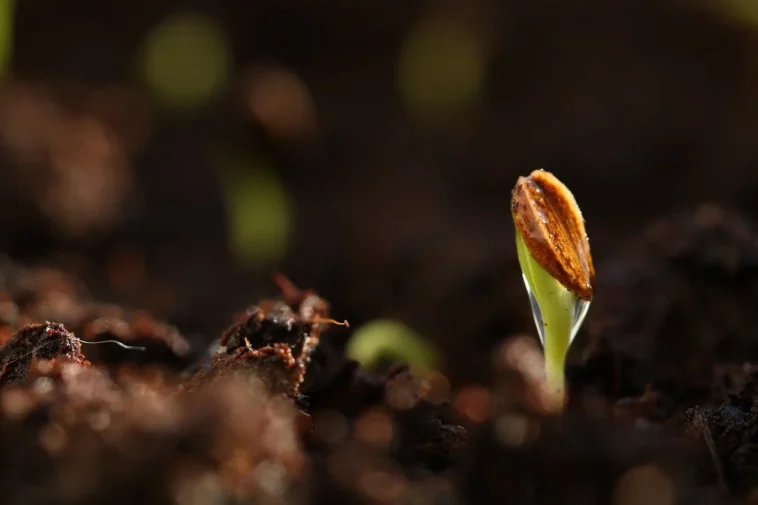Pothos are great plants. They look great, and they’re easy to grow. TO help you make the most out of your Pothos, today, we’ll be looking at what Pothos soil needs and what kind of soil could be great for it.
The perfect Pothos soil needs to be nutrient-rich, can retain moisture, well-draining, well-aerated, and slightly acidic.
Three potential soils could be…
- 2 parts Miracle grow Indoor potting mix and 1 part sand
- 1 part cactus soil, 1 part compost, 1 part peat
- 2 parts peat moss, 1 part perlite, 1 part pine bark fines.
You could also grow Pothos in water.
Table of Contents
Why this matters
Some people think that any plant can go in any kind of soil. But this could not be further from the truth. In reality, each plant has some particular needs for the types of soil it can go into.
This is because houseplants are actually wild plants from across the world that we decided to put into our homes. Since they have been taken out of their environment, we need to do our best to recreate it.
No matter what kind of plant you have, the best soil type is soil that it would naturally grow in if it were in the wild.
Factors of great Pothos soil
Nutrients
The first thing that all Pothos soil needs to be is rich in nutrients. Nutrients are hidden in the soil but absorbed via the roots and used to repair the plant’s cells.
In humans and other animals, these nutrients will come from the food we eat. But in plants, they are taken up from the ground. If a Pothos is in soil with hardly any nutrients, you can’t expect it to make repairs or stay alive.
For this reason, soils based heavily on sand would not be appropriate for Pothos.
Mositure
Pothos tend to live in moist environments in the wild, where there is always plenty of moisture in the ground.
Since a plant’s cells are mostly made up of water, the soil it’s sitting in must have enough water so that it can be absorbed easily and quickly. If there is not enough water in Pothos soil, the plant will dry up quickly, and the cells will not hold together as well as they should. This can lead to the plant dying.
If you water your plants and it goes straight to the bottom of the pot, this is a sign the soil cannot retain moisture.
Drainage
As well as being able to retain moisture, Pothos soil also needs to drain properly. This is accurate, not just for the Pothos, but for most plants. If the water cannot drain, it will cling onto the soil.
Since the soil is organic matter, it can become the perfect destination for fungi. Once fungi gets into the soil, it can quickly get to the roots and cause root rot.
You can easily check that your soil has proper drainage when you water it. You should notice that even though the water goes all the way through the soil, a tiny bit should still come out of the bottom.
Air
The aeration needs to be just right. Aeration refers to the soil’s ability to flow in and out of it.
Having access to enough air is vital for the roots. It allows them to breathe, which helps them to maintain their temperature and moisture levels.
The test for aeration is similar to their test for drainage. The water test.
For this reason, a super-dense soil, such as one made of concrete, would not be appropriate for the Pothos.
Acid
And finally, we have acidity. You might remember this kind of thing from high school chemistry lessons. The acidity of the soil determines what kind of chemicals the plant can be made of to survive.
The best acidity for Pothos would be slightly. Any pH between 6.1 to 6.5 is an excellent acidity for Pothos. Generally speaking, they can go a bit lower and still survive. But anything below a pH of 5.8 will be too acidic.
As you can imagine, you wouldn’t grow a plant in vinegar. So why would you use soil that recreates those conditions?
Soil Recipes
Sand and Mircale
The first kind of soil uses only two ingredients.
Firstly get yourself 2 parts Miracle Grow Indoor Potting Mix. This is formulated to make houseplants grow quickly. It should be available from your local garden centre, but you can always order some from Amazon if it isn’t.
You will need to pop that into a bowl and add 1 part sand. You can probably get sand at your local beach. But if you don’t live near one, it isn’t hard to obtain.
The miracle grow will provide moisture retention and nutrients. But the sand will provide the drainage.
CCP
The second soil you could use uses three parts.
Firstly, 1 part cactus soil. This soil has excellent drainage. That’s why it’s so popular with owners of cactuses and succulents.
Mix that with 1 part compost. You could make this yourself with the help of some worms and plenty of patience. But if you don’t have the time for that, most garden centres will sell compost.
And finally, add 1 part peat. This is a more upmarket kind of soil. It comes from peat bogs, many of which are located in England. It is packed full of nutrients.
Water
I know this next one is kind of breaking the rules a bit, but who are you gonna tell? The Pothos police?
The great thing about Pothos is that they don’t have to grow in soil. If you’d rather, you could grow them in water. This allows you to see the whole plants, roots and all!
To do it this way, you will need to add some liquid fertilizer to a glass vase and clean out the water every couple of weeks. And don’t worry, it won’t get root rot this way. Since there is no soil, there is nothing for fungi to grow on.
PPB
And finally, this kind of soil is ideal for people with a little extra time on their hands who want their Pothos to grow to optimum health and size.
The first step is to get 2 parts peat moss. This is nothing to do with peat and is actually just several kinds of moss dried up.
Add to that 1 part perlite. Perlite looks like tiny pebbles made of chalk. And it will provide the drainage.
Finally, mix all of that up with 1 part bark fines. This is a kind of soil made from conifer plants.
Signs of bad soil
Yellow Leaves
The first sign that your plant is in the wrong soil is that the leaves are going yellow. Although it’s called “yellow”, it’s actually just a much lighter shade of green. However, when “yellow” leaves are next to green leaves, the light green looks yellow.
A lack of green is a sign of a lack of oxygen in the soil. This means that the soil it’s in is not aerated enough, and the roots are unable to breathe. Your Pothos is sitting in soil that’s too dense.
If you were to put Pothos roots into concrete, the leaves would turn yellow.
Soft Leaves
Although a Pothos should never be crispy, it should have a bit of firmness. If you were to tear off a leaf, it shouldn’t turn to mush under the light pressure of your hands.
However, if it does, this could be a sign that your Pothos has developed root rot. Since root rot prevents your plant from absorbing water, the cells will hold onto their water, even as the cell walls weaken. As a result, the smallest amount of pressure can cause them to burst.
Wet Soil
And finally, you can tell that your soil has inadequate drainage where the soil is super wet. Pothos soil is okay, being a bit damp. But when it looks more like a paddling pool than a plant pot, the plant is not absorbing any of the water. It’s all sitting in the soil.
This is not good as it can lead to root rot. If you find that when you add water, it tends to sit around the top and not trickle down, this is a sign that the drainage is not correct.
The water needs to be for the whole soil, not just the top.
Conclusion
And there we have our guide on the best kind of soil for your Pothos plant. Which of the four recipes is best for you will depend on several factors. How much time do you have? What is your budget? What does your local garden store have in stock?
Putting a plant into the right kind of soil is one of the most essential parts of keeping it alive. When you have a houseplant, you will need to recreate the conditions it would live under if it were in the wild.
Now that you know what to do. Go and make your Pothos soil so that your plant can grow big, green, and beautiful.


